Trump’s G7 Return: How Memes, Tariffs, and Optics Are Rewriting Global Diplomacy
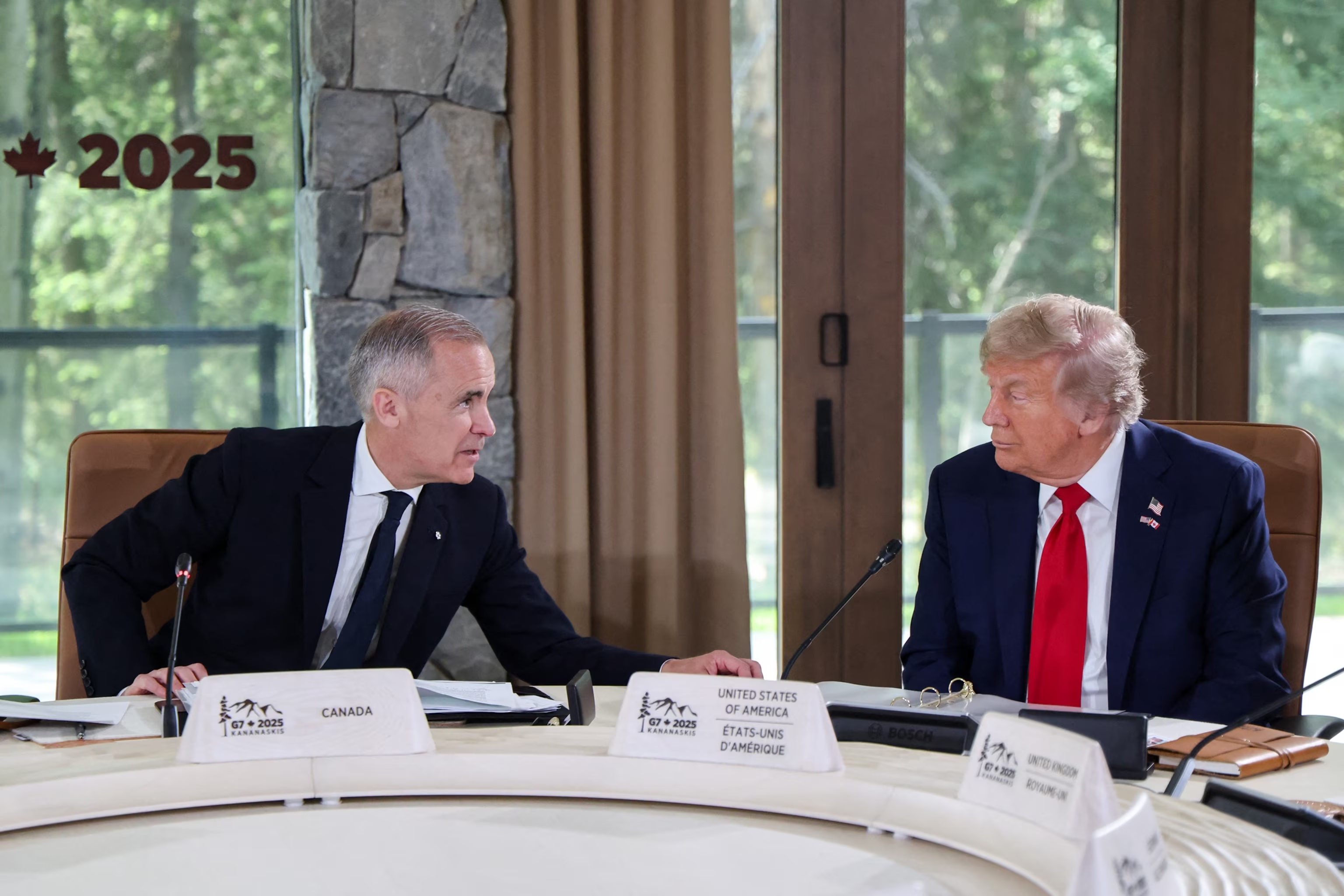

A handshake becomes a power play. A proverbial chair sits empty (Russia's exit from what was formerly known as the G8 Summit). A carefully composed photo shatters diplomatic pretense. At the 2025 G7 Summit in Kananaskis, Canada, these seemingly minor moments transformed into ammunition for both sides of an increasingly polarized geopolitical landscape, redefining how international relations are played out in the public eye. As President Trump's contentious appearance continues to resurface in political discourse, it reveals something more profound about how diplomatic theatre has become the raw material of our meme-driven political consciousness.
Long before he returned to the G7 stage in 2025 with sweeping new tariffs, Donald Trump was already predicting this move. In a now-viral 1988 Oprah interview, he argued that if he ever ran for president, “we’d tax the hell out of countries that have been ripping us off for years.” What sounded like a brash TV moment then has become real-world economic policy now. And at this year’s G7 Summit in Kananaskis, Canada, that decades-old bravado collided with global diplomacy.
When Diplomatic Theatre Becomes Digital Currency
The infamous image—German Chancellor Angela Merkel leaning forward over a table, surrounded by world leaders, while Trump sits with arms folded—wasn't just a photograph. It became an instant cultural artifact, a visual shorthand for a specific geopolitical moment. This was diplomacy transformed into viral storytelling, where body language communicated more than any joint statement.
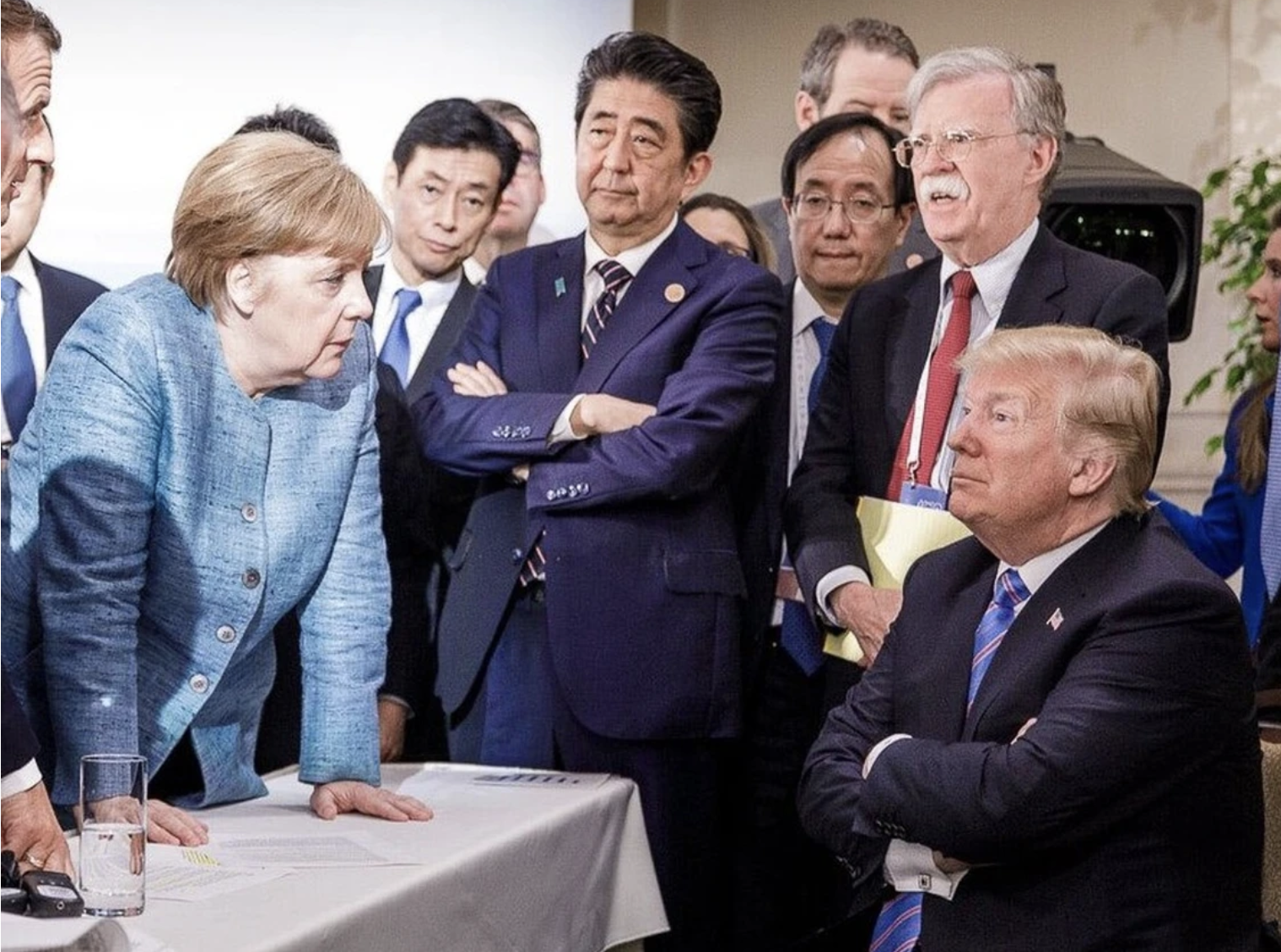
Photo released on Twitter by the German Governments spokesman Steffen Seibert on June 9, 2018 and taken by the German government's photographer Jesco Denzel shows US President Donald Trump (R) talking with German Chancellor Angela Merkel (C) and surrounded by other G7 leaders during a meeting of the G7 Summit in La Malbaie, Quebec, Canada. Jesco Denzel/AFP/Getty Images
What made these moments resonate was how perfectly they visualized the tension between tradition and disruption in global politics. They gave us characters, conflict, and visual drama—the essential elements of shareability.
The summit's imagery—particularly moments featuring then-leaders Trudeau, Macron, and Merkel alongside a defiant Trump—continues to circulate as reference points in our collective political memory. They've become shorthand for diplomatic breakdown, nationalist versus globalist tensions, and the fragility of longstanding alliances.
The Afterlife of Political Moments
What’s most revealing isn’t just how these moments went viral initially, but their remarkable staying power, as well as their economic, social, and cultural impact. Years later, the summit's imagery continues to be repurposed and recontextualized across platforms like X (formerly Twitter) and TikTok.
Political events no longer begin and end with official statements. They now live on as templates, reaction formats, and emotional reference points—used to interpret entirely new developments. The G7 confrontation, for example, became a lasting visual metaphor: not just about one policy disagreement, but about the larger drama of nationalism versus globalism, authority versus defiance.
No one understood this better than President Trump. Long before most world leaders were thinking in terms of memes and media cycles, he was curating his presence for maximum shareability. He didn't just participate in summits—he produced moments. Whether through calculated body language, unexpected fashion choices, or seemingly offhand remarks, Trump showed an acute awareness that the image is often more potent than the policy.
A perfect example of this is the meme-ability and lasting significance of Trump's latest viral trade policy.
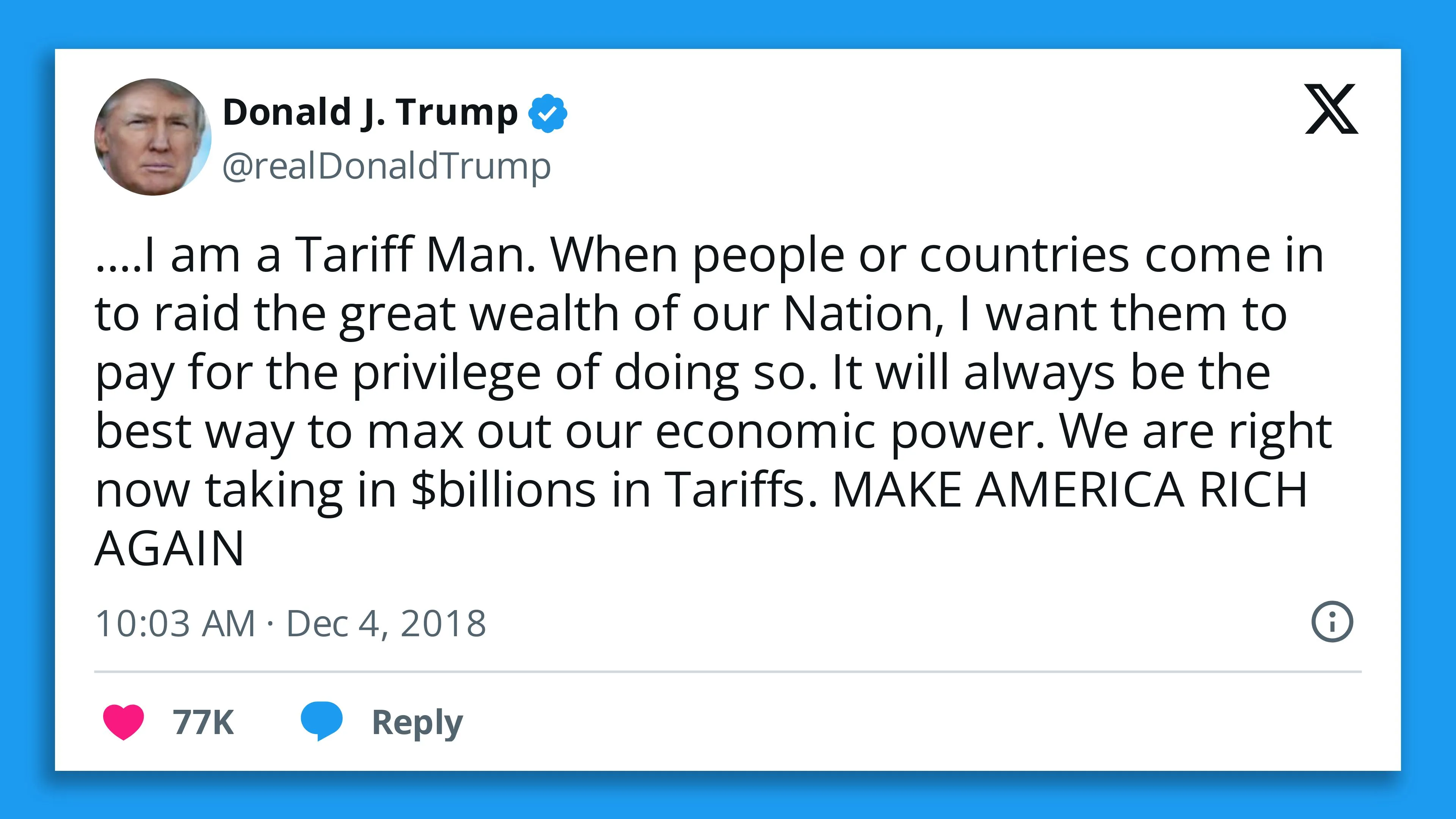
There was not a moment when you were scrolling on social media that you did not run into a reference to Trump's new tariff strategy. While much of Trump's G7 legacy lives on in memes and viral clips, his tariff strategy remains a valuable reference point for understanding the substantial economic impact it had. According to the U.S. Treasury, the latest tariff measures brought in $71.9 billion in revenue year-to-date—an 81% increase from the same period last year. Although controversial, the policy has generated a measurable stream of income for the U.S. economy, reinforcing the idea that viral diplomacy doesn’t necessarily mean hollow governance.
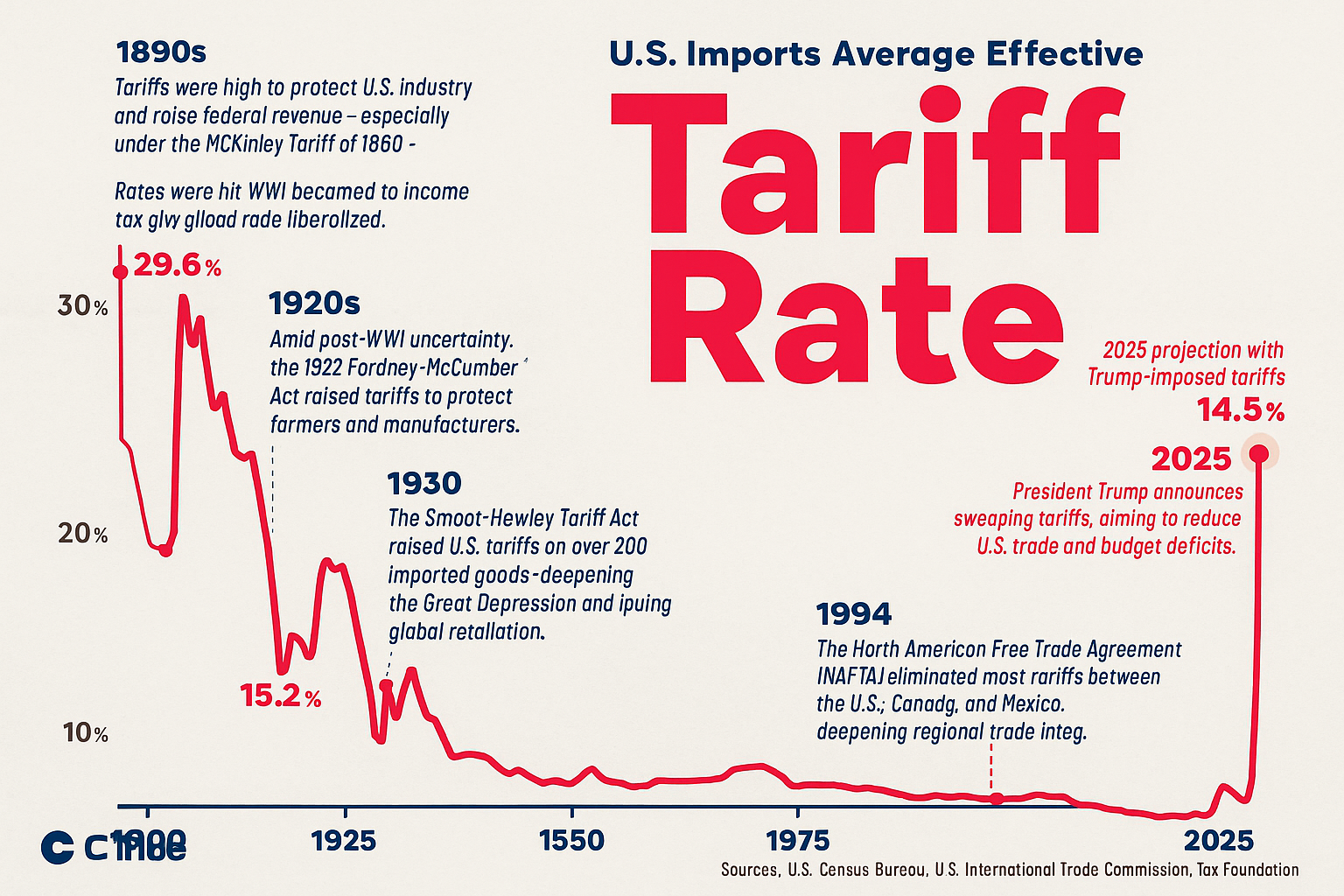
This reflects a more profound generational shift in the development of political literacy. For many Gen Z and Millennial users, understanding international relations comes less from legacy news and more from the remix economy of memes, reaction videos, and viral clips. Trump, in many ways, governed with that logic, prioritizing moments that could live on, looped and reframed, in the feeds that shape public perception.
The Authenticity Paradox in Digital Diplomacy
The G7 Summit highlighted a curious paradox in modern political communication. While carefully choreographed photo ops have long been standard in diplomacy, it's often the unscripted moments—such as Trump arriving late, leaving early, or reportedly tossing Starburst candies toward Merkel—that generate authentic engagement.
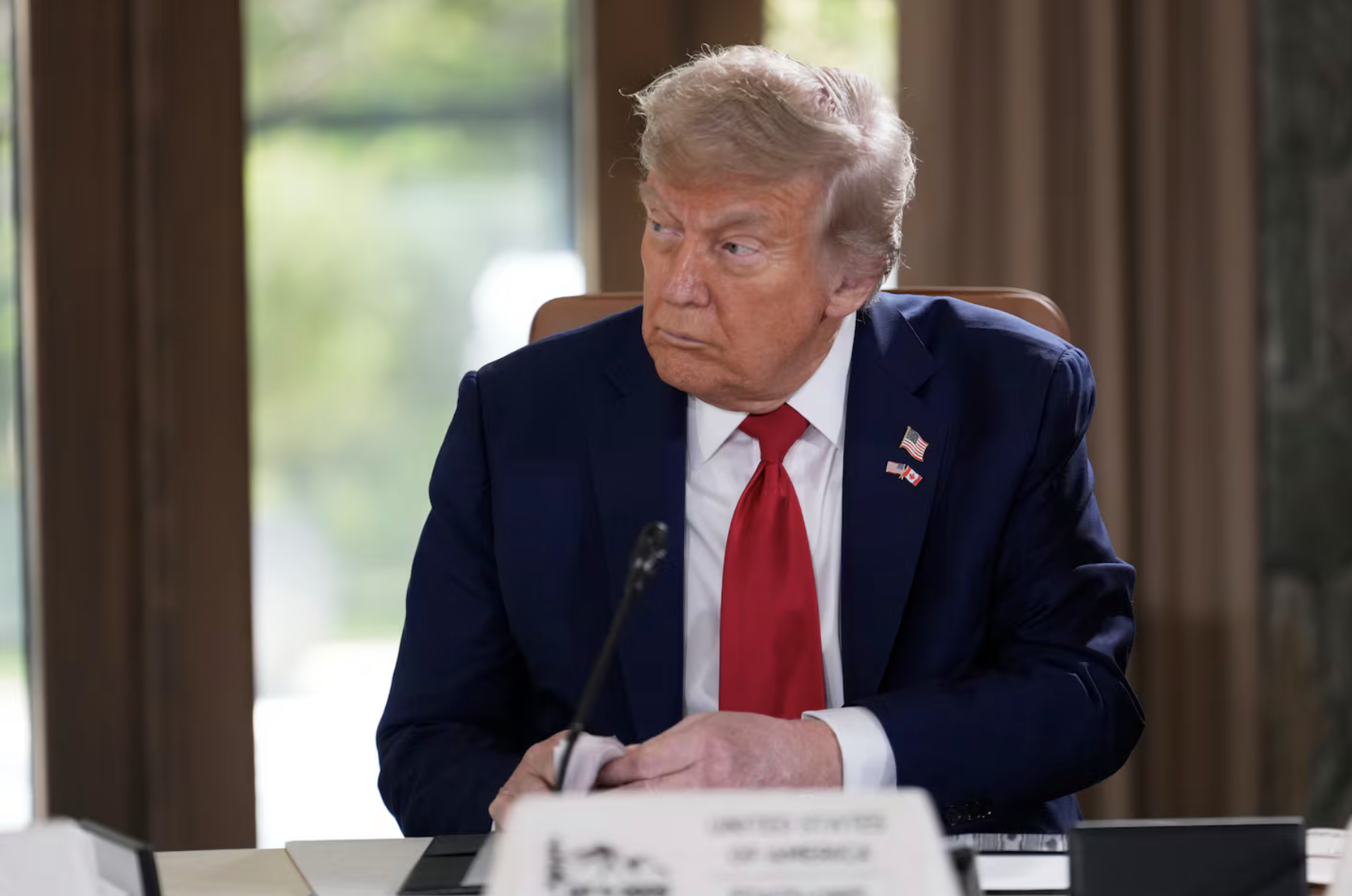
This creates a strange incentive structure where what diplomats might consider "gaffes" become moments of cultural relevance. The most shareable content is rarely the official press statements or policy announcements but rather the moments of tension, personality clash, or unexpected vulnerability.
There's a reason politicians increasingly hire digital natives for their communications teams. Understanding what makes a moment memeable is now as crucial as understanding policy. The transmission mechanism for political ideas has undergone a fundamental change.
How Trump’s Media Savvy Turned Diplomacy into Performance
Donald Trump’s approach to international diplomacy often blurred the line between governance and entertainment. More than any U.S. president in recent history, he demonstrated a keen understanding of how optics, spectacle, and algorithm-friendly moments could drive narratives. His body language at the G7, spontaneous remarks to reporters, and confrontational presence weren’t diplomatic accidents—they were platform-ready gestures calibrated for maximum cultural impact.
Trump’s instinct to treat global summits as stages rather than boardrooms allowed him to dominate headlines and social media feeds alike. By embracing conflict, visual drama, and unscripted behaviour, he leveraged meme dynamics long before most political leaders recognized their power. The G7 confrontation became not just a diplomatic flashpoint but a piece of cultural content engineered to live well beyond the news cycle.
Trade Talk, Pins, and Political Theatre in Real-Time
At this year’s G7, Donald Trump didn’t just dominate headlines—he visually signalled a new stage of performative diplomacy. Arriving with a Canada-U.S. lapel pin instead of his usual solo Stars and Stripes, Trump ignited speculation before even speaking.
“It wasn’t in any gift basket,” a spokesperson for Canadian Prime Minister Mark Carney confirmed, noting that Trump and his team brought the pins themselves.
It may seem like a minor detail, but in the visual economy of global politics, it mattered. As trade negotiations with Britain and Canada progressed, and China’s hold on rare earth minerals loomed in the background, Trump’s symbols, statements, and stagecraft were being parsed in real-time across TikTok, Reddit, and Discord channels.
Just hours after Trump teased a possible trade agreement with Starmer and hinted at friction with Carney over tariffs, memes were already circulating, showing the leaders Photoshopped onto reality TV confessionals and chessboards—each representing a different strategy, a different genre of leadership.
When National Identity Becomes Personal Brand
The most significant cultural impact of Trump's G7 appearance was its personalization of international relations. Complex policy disagreements about trade, climate change, and international cooperation became distilled into personality-driven narratives.
When Trump quipped, “I am a tariff person” while negotiating with Carney, the comment ricocheted through political TikTok and Reddit threads. It’s the kind of line that signals branding over policy—and invites remixing, reaction videos, and memetic distillation. Carney, who has positioned himself as a globalist technocrat, provides a sharp visual and rhetorical contrast, further fueling the online spectacle.
This personalization of diplomacy mirrors broader trends in how we consume politics, shifting from systemic analysis to character-driven conflict. The "America First" agenda has evolved into a personal brand expression, complete with its aesthetic, language, and emotional resonance.
For younger audiences, especially, this personalization has lasting effects on how they conceptualize international relations. “Students often recognize leaders and moments more than policies and systems," shares Dr. Emma Green, Georgetown University's political communications specialist. "They can discuss the expression on a president’s face before they can explain the policy behind it.”
The Legacy Effect: When Moments Outlive Their Context
What is perhaps most revealing about Trump's G7 summit appearance is how it continues to serve as a reference point in current discussions about America's place in the world. As tensions simmer between traditional allies and new global challenges emerge, the visual language established during those confrontations provides a framework for understanding new developments.
This digital afterlife of political moments creates a strange dynamic where past conflicts never fully resolve—they enter a kind of cultural archive, ready to be reanimated whenever similar tensions arise. The event becomes less about what specifically happened and more about what it represents in our collective understanding of power, nationalism, and international cooperation.
The meme-ification of the 2025 G7 Summit is a historical reference, and it impacts diplomatic memory. As Trump and Carney spar over tariffs versus “more complex ideas,” and Starmer negotiates a long-delayed trade deal, users online increasingly reference past images and power plays to interpret the present. A Maple Leaf pin becomes a political Rorschach test. A second handshake becomes a sequel. And one, again, the online audience becomes co-writers in the global script.
As we navigate increasingly complex global challenges, this meme-ification of diplomacy raises essential questions: Does reducing complex geopolitics to shareable moments deepen engagement or trivialize substance? Can meaningful international cooperation survive in an environment where confrontation generates more cultural currency than consensus?
The answer may lie not in resisting this new reality, but in recognizing that the theatre of diplomacy has found a new, more democratic stage—one where the audience participates in writing the script.